On the Ground: While no one was looking, East L.A. got transplanted to Brazil — lowriders, taco trucks and all
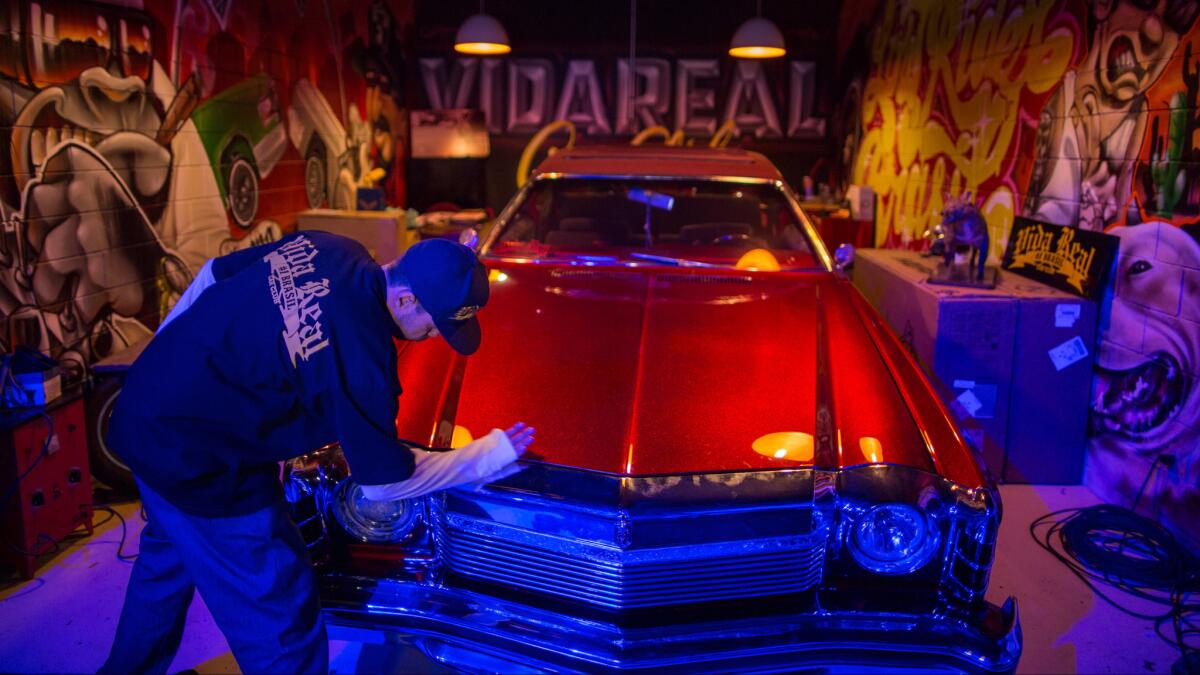
- Share via
Reporting from Sao Paulo, Brazil — The streets are packed with people young and old in Dodgers jerseys or Raiders jackets — L.A. Raiders, that is. Some wear white socks pulled up high under Dickies shorts. There are shaved heads, tattoos celebrating Chicano culture, bright white Puma sneakers and flannel shirts, with just the top button fastened, over white undershirts.
Dozens and dozens of immaculately restored cars are lined up and roped off, as people pose for photographs in front of the shiny chrome grills.
A mariachi band on a stage blasts music to the crowd. The vibe is very East L.A.--but the location nowhere near Whittier Boulevard.
“Hey — what’s all this?” asks a woman passing by in a family sedan that looks very out of place.
“Festival Lowrider,” someone says, pronouncing the word slowly in Portuguese — Lo Hi Der. He moves his outstretched hand up and down to mimic the hydraulic bounce of the cars featured in old rap videos.
“Oh, yeah, lowriders,” says the woman. “Nice.”
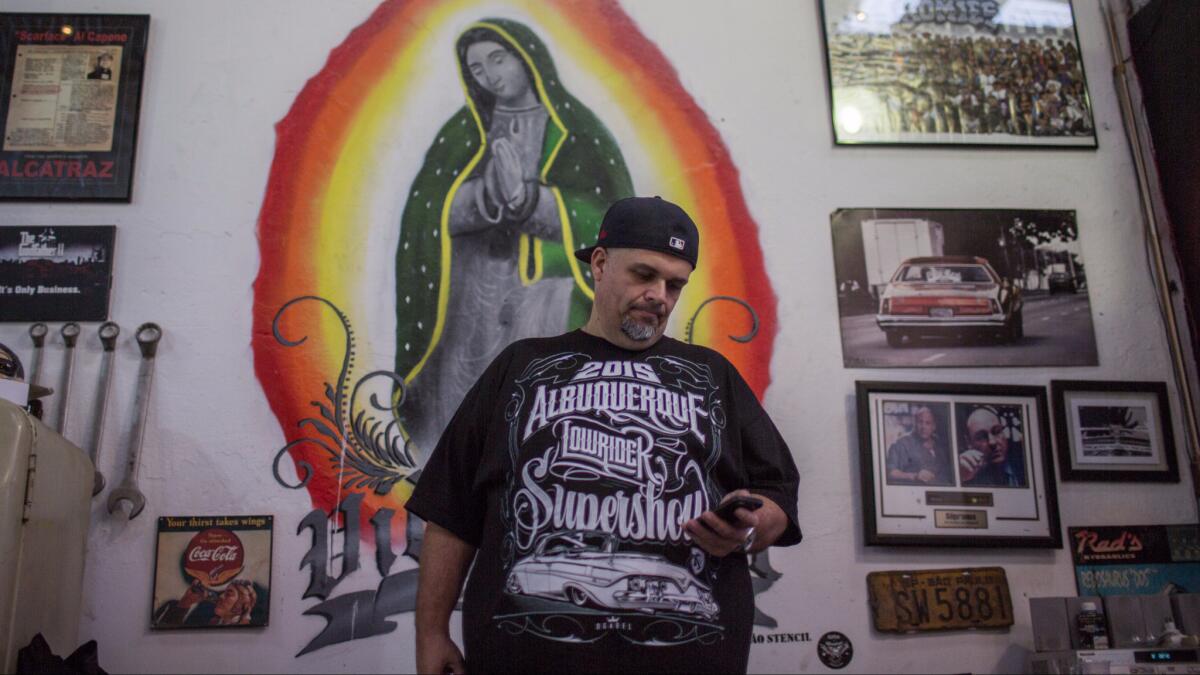
Actually, better than nice. Residents of Latin America’s largest city have created a Brazilian version of Eastside car culture, capturing the music, the clothing and, most of all, those gleaming cars.
Many people in Sao Paulo might know what a lowrider is, but within the festival grounds, the culture born in the Latino barrios of Los Angeles in the 1940s and 1950s has been reproduced so authentically that only the truly dedicated recognize every hidden reference.
In place of a license plate, a bright red station wagon features iconic art of the smiling cat from the Felix Chevrolet dealership more than 6,000 miles away in downtown Los Angeles.
Did this car actually come from California?
“No, no, of course not,” says Rafael Ambrosio, a member of a local lowrider club and one of the event organizers. “Almost none of us have ever actually been to the U.S. But L.A. is our inspiration, so we know all the symbols. They reproduced that sign down here.”
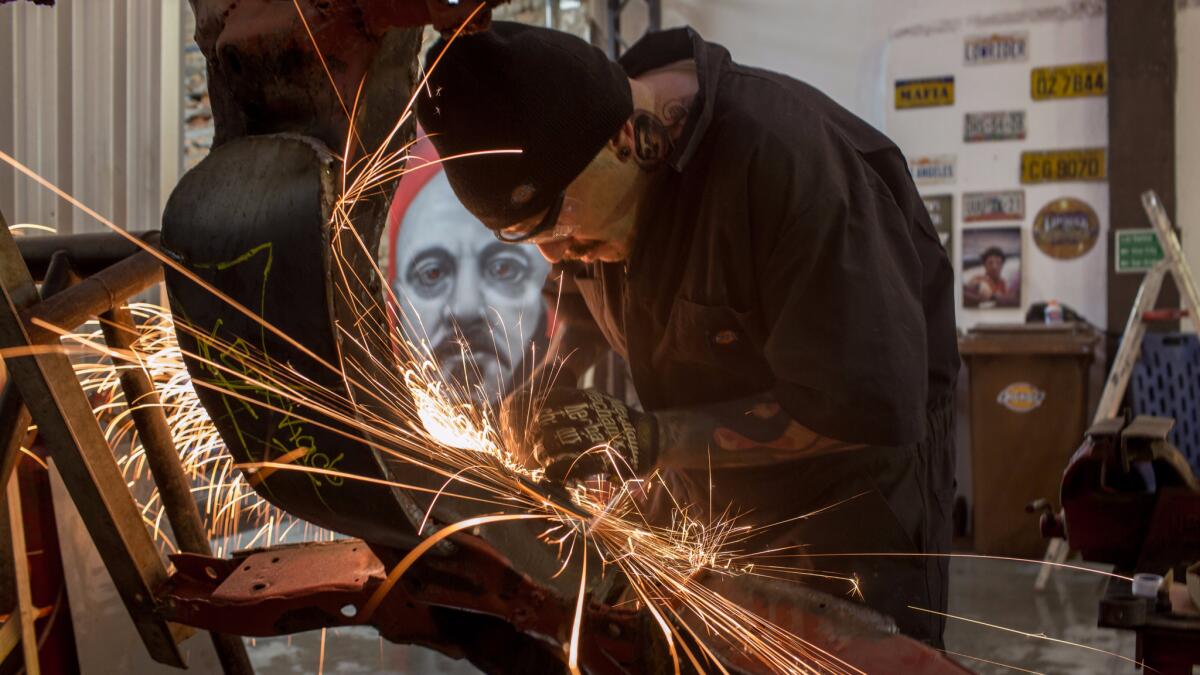
Ambrosio greets friends as he makes his way through the festival. To his left are a couple of dozen sparkling lowrider bicycles, tricked out more for show than for use. To his right are more than two dozen people lined up at a food truck to order tacos that in contrast to those usually served in Brazil are authentically Mexican.
He admires a bright red 1974 Monte Carlo. Two huge flags on poles emerging from the windows blow in the wind — one Mexican and one Brazilian. One side of the car features an L.A. logo in the font used by the Dodgers.
The car belongs to Jose Americo Crippa. Known to his friends as Tata, he helped import the lowrider scene to Brazil.
He was living in Miami in the mid-1990s, by his own account not doing much at all, when he saw his first lowrider and was intrigued. After spotting a copy of Lowrider Magazine at a drugstore, he was hooked.
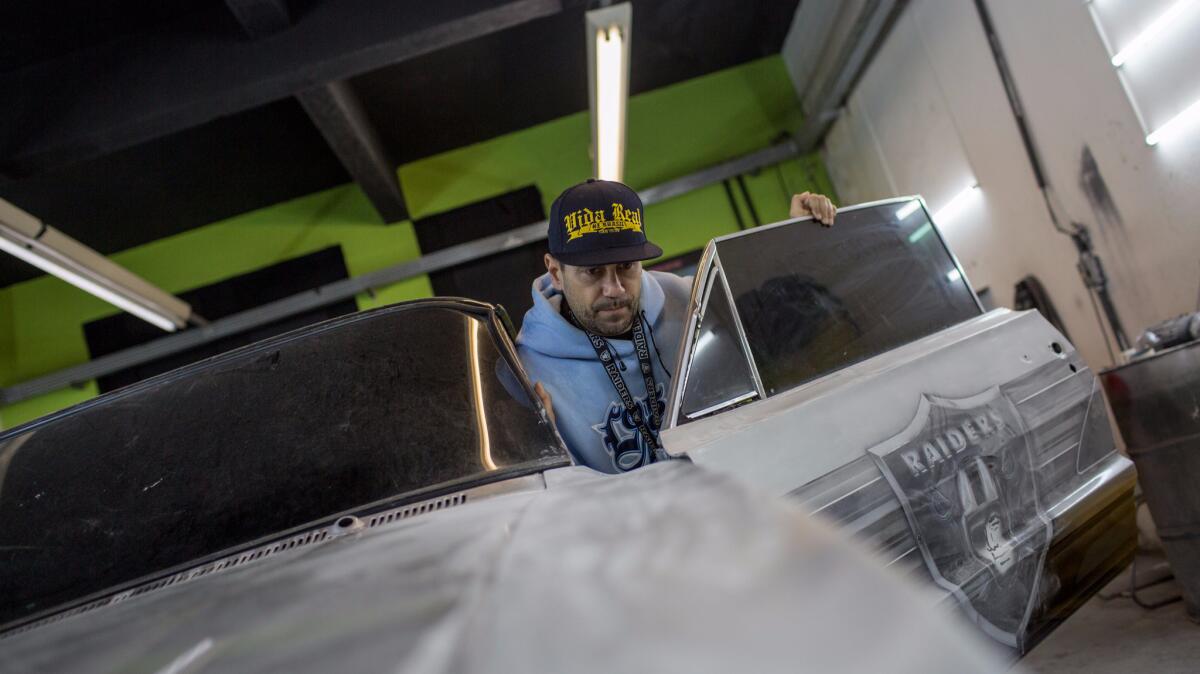
“It’s a culture that adds so much to the city,” he says. “It helps the kids to forget a bit about drugs and crime, and instead they focus on art. It’s art practiced on cars and bicycles.”
“We’re Latinos,” he adds. “We’re not the exact same type of Latinos as the Chicanos, since they are far away and different but we feel deep similarities.”
He’s visited Los Angeles several times to deepen his knowledge, appeared in the magazine and starred on a Brazilian television program called “Lowrider.” The show inspired a Sao Paulo state politician to launch a legislative campaign to establish “Lowrider Culture Week.”
The legislature did so in late 2015, choosing dates around the Cinco de Mayo holiday celebrated in Mexico and by many Mexican Americans. The state even provides funding to the festival.
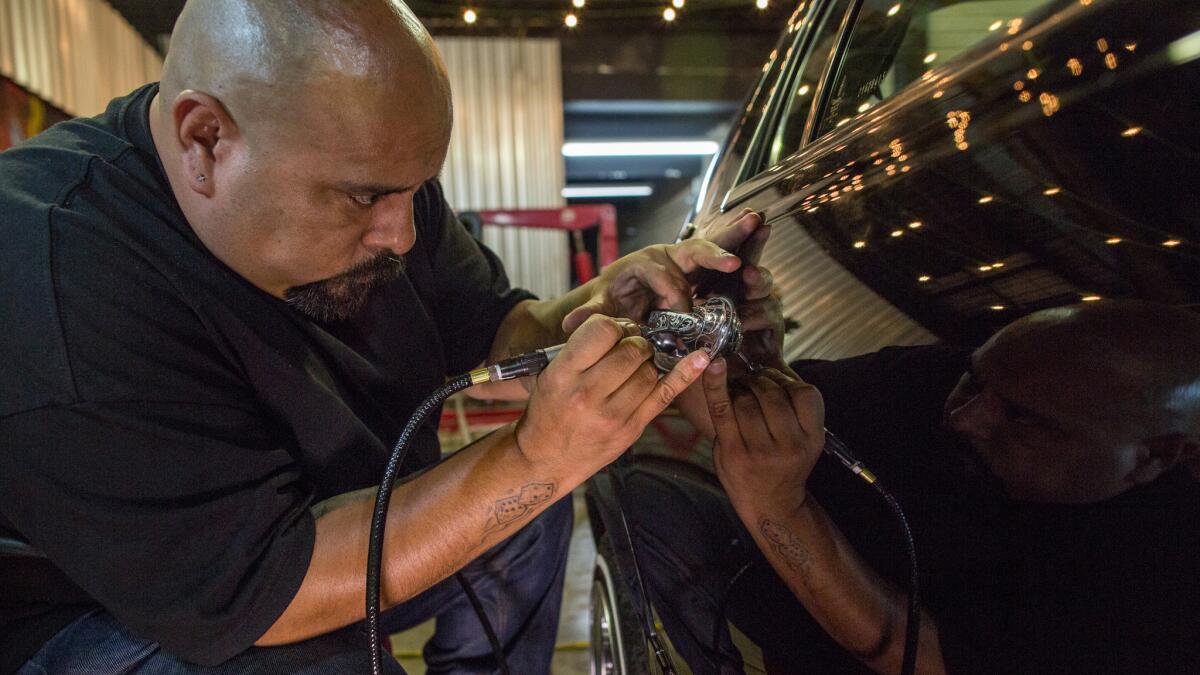
As in Los Angeles, most lowrider events in Sao Paulo are outside the wealthy city center. But there are aficionados from many backgrounds and classes.
An older woman, accompanied by a young boy, makes her way through an outdoor exposition of photographs of Los Angeles. They find the red car with the Mexican flag and stop to marvel at it.
Behind them, another food truck, “Cadillac Burger,” serves hamburgers and guacamole in plastic baskets lined with reproductions of the Feb. 26, 1942, edition of the Los Angeles Times.
We’re not the exact same type of Latinos as the Chicanos, since they are far away and different but we feel deep similarities.
— Jose Americo Crippa
Jesus Camarena, a 36-year-old artist in an oversized white T-shirt, asks for a burger in a combination of English and Spanish. The cashier, wearing a bandanna on her head, speaks neither but eventually figures out what he wants.
Camarena, who goes by the name Swing, is visiting from his home in Anaheim. The festival flew him to Brazil to engrave signs and car parts.
The scene reminds him of growing up in Southern California, he says: “Seeing lowrider culture in Sao Paulo is like having deja vu.”
Bevins is a special correspondent.
ALSO
Confused? We break down the ‘Brexit’ vote for you
$5.4-billion expansion of Panama Canal could reshape world trade routes
Colombia and FARC rebels sign cease-fire deal in a bid to end half a century of war
More to Read
Sign up for Essential California
The most important California stories and recommendations in your inbox every morning.
You may occasionally receive promotional content from the Los Angeles Times.













